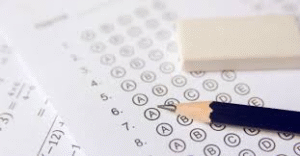Finding Your Calm: Simple Breathing Exercises for Instant Stress Relief
Introduction: The Breath as an Antidote to Stress
In the relentless rush of modern life, stress often feels like an inescapable shadow. Deadlines loom, anxieties multiply, and the constant hum of connectivity leaves little room for reprieve. Yet, amidst this cacophony, lies a remarkably simple, yet profoundly powerful, tool for immediate stress relief: our breath. Breathing, an involuntary act, also offers a gateway to conscious control, allowing us to directly influence our nervous system and cultivate a sense of calm. Far from being a mere biological function, targeted breathing exercises are a practical, accessible, and scientifically-backed method to reset our minds and bodies, offering an instant antidote to the grip of stress and anxiety.

The Science of Serenity: How Breathing Calms the Body
The efficacy of breathing exercises stems from their direct impact on the autonomic nervous system, specifically by activating the parasympathetic nervous system, often referred to as the “rest and digest” system. In times of stress, our sympathetic nervous system kicks into gear, triggering the “fight or flight” response, characterized by increased heart rate, shallow breathing, and heightened alertness. Consciously engaging in slow, deep breathing techniques reverses this process. It stimulates the vagus nerve, which plays a crucial role in regulating mood, heart rate, and digestion. This activation lowers cortisol levels (the primary stress hormone), reduces heart rate and blood pressure, and promotes a state of physiological relaxation, thereby creating a profound sense of calm.
Essential Techniques: Box Breathing and the 4-7-8 Method
Among the myriad of breathing techniques, two stand out for their simplicity and effectiveness: Box Breathing and the 4-7-8 Method. Box Breathing, also known as “square breathing,” is favored by military and law enforcement personnel for its ability to quickly calm the mind in high-stress situations. It involves a four-part cycle, each lasting for an equal count (typically four seconds): inhale through the nose for a count of four, hold the breath for a count of four, exhale slowly through the mouth for a count of four, and hold the breath again for a count of four. This methodical, rhythmic pattern provides a focal point, diverting attention from anxious thoughts and creating a predictable rhythm that signals safety to the nervous system. Box breathing is particularly useful when you feel overwhelmed, need to regain focus, or are preparing for a stressful event, offering a rapid “reset” for both mind and body.
The 4-7-8 Method, popularized by Dr. Andrew Weil, is often described as a “natural tranquilizer for the nervous system” and is especially effective for anxiety and promoting sleep. This technique follows a specific ratio: inhale quietly through the nose for a count of four, hold the breath for a count of seven, and exhale completely through the mouth, making a “whoosh” sound, for a count of eight. The extended exhalation is key here, as it maximizes carbon dioxide release and further activates the parasympathetic nervous system. This method is ideal for moments of acute anxiety, when a racing mind makes it difficult to relax, or when trying to fall asleep. Its deliberate pace helps to slow a racing heart and shift the body into a state conducive to rest.
When and How to Practice: Maximizing Effectiveness
Knowing when to deploy these techniques is as important as knowing how. Box breathing is excellent for on-the-spot stress reduction – before a presentation, during a difficult conversation, or when feeling overwhelmed by tasks. Its quick, rhythmic nature allows for discreet practice almost anywhere. The 4-7-8 method, with its longer exhalation, is particularly potent for winding down at the end of the day, combating insomnia, or when you need a deeper sense of calm to manage a surge of anxiety. Both techniques are best practiced regularly, even when not experiencing stress, to train the body and mind to respond more efficiently when needed. Consistency builds resilience, making these exercises even more effective as a preventative measure.
Conclusion: Breathing as a Foundational Tool for Well-being
In conclusion, breathing exercises are not simply a fleeting trend but a powerful and accessible pathway to mental and emotional well-being. By consciously engaging with our breath through techniques like Box Breathing and the 4-7-8 Method, we unlock an innate ability to regulate our stress response, calm our nervous system, and cultivate a profound sense of inner peace. These simple yet effective practices offer instant relief and, with consistent application, serve as a foundational tool for navigating the complexities of life with greater equanimity and resilience.



















